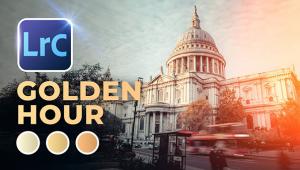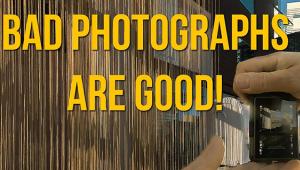What’s Next for the Future of Photography? Take Some Cues From Imaginative Pro Shooters

© Ann Elliott Cutting
As we look ahead to 2017 and focus on the future of photography, it seemed appropriate to ask photographers who’ve created innovative, forward-thinking images what motivated them to make these inventive shots.
The short answers were inspiration, compelling interests, and business acumen. The longer stories were much more interesting, illuminating, and inspiring.
High Concept
Fall is the time of year that conceptual, advertising, and fine art photographer Ann Elliott Cutting thinks about promotion. “It’s when I’ll reassess,” she says, “when I’ll think, What do I want to do in the coming year, and who do I want to work for?”
This fall she decided she wanted to continue to work in the science and pharmaceutical areas. “The new thing that’s really hot in molecular biology right now is the CRISPR technique [of genetic engineering]. I thought that a Rubik’s Cube would be a good metaphor for DNA because it’s a puzzle to be solved, and I could twist and turn it to make a double helix shape. The scissors are where you cut out a piece of DNA and splice in something else. It’s a quick read for gene modification taken to the next level.”
She got three cubes, twisted them, stacked them, and photographed them at different heights so the spiral would continue when she created a single image in postproduction. The loose pieces were pulled from one of the cubes and fixed with putty to an apple box at different angles. The scissors were held in place with a clamp that’s hidden by one of the cubes.
Cutting’s image is imaginative and creative, a smart idea skillfully executed, but most of all it demonstrates her awareness of how to visually communicate with the market she wants to reach. “They’ll know what I’m getting at,” she says.

© Michael Clark
Make Mine Medium
Adventure sports photographer Michael Clark wasn’t unhappy with his DSLR gear—far from it—but late last year he decided to invest in a Hasselblad H5D 50c Wi-Fi medium format camera and four lenses to go with it.
How come? Mostly to set himself apart from the competition by providing a different look to his photos. “The larger sensor of a medium format camera creates a more isolating look when shooting portraits or anytime you are using a large aperture,” Clark wrote at the time, and he felt that look would appeal to discerning clients.
There was also the advantage of 16-bit color—“much deeper, with much smoother tonal gradation. You can’t see it until you make a print, but when you do, it’s a pretty big difference.”
Perhaps most appealing was the ability to sync flash at 1/800 second and get the entire power output from his flash units. “That’s a big deal for an outdoor photographer looking to separate himself from the pack,” Clark says.
There were also a few advantages he didn’t know about until he started working with the camera. “You shoot differently with it,” he says. “In fact, you think differently, more deliberately, with more planning. You work more slowly and think more about what you’re doing.”
And you literally see differently. “The viewfinder is so big, so sharp and clear, that you can see clearly into the corners of the image—you really see the entire image—and if something’s out of alignment, it’s very obvious very quickly. It’s like you’ve got a monitor set up and you’re shooting tethered—it looks that big.”
The Hasselblad hasn’t replaced anything—he still shoots most of his images with his DSLRs—but it’s started to pay off with some clients. “I did some of a New Balance campaign with it,” Clark says, “and got some spectacular pictures. I can say, ‘Well, if you’re going to be printing this on a billboard, I’ve got a camera that can make this look insanely good at that size.’
“And then there’s the mental thing of pulling this camera out and the art directors seeing it. People kind of freak out: ‘What is that thing?’ It has an effect; you can see them thinking, This guy must be a successful photographer; we better hire him.
“I know you can’t bank on that, but it’s a bonus when you’re standing there talking about a job you’d like to get.”

© Harold Davis
Flowers’ Powers
Fine art photographer, author, and educator Harold Davis says the idea and techniques for his photograph came from a client’s request. “An art publishing company pointed me to X-ray photos of flowers that had been successful for them in the art market,” he says, “and they asked if I could do something like it.”
Davis started experimenting. An old light box he once used to sort transparencies became a backlight for flowers. He tried combining flatbed scans with photos. Nothing was out of bounds as he played with photo, graphic, and postproduction techniques.
The process he came up with involves an HDR sequence of shots taken with his camera on a tripod above the light box, upon which the flower lays. In post he “throws out everything on the right side of the histogram—the dark values, as I’m only concerned with the lighter ones.”
Those images are sent through an automated HDR program—“either Photomatix or Nik HDR Efex Pro.” Then, starting with the lightest exposure and using Photoshop layer masking and the paintbrush tool, he’ll selectively paint in the colors he wants. The last steps involve Photoshop layers, blending modes, filters, and Lab color adjustments—“Lab is an alternative, bizarre color space,” he says—for creative color purposes as well as changing the image background from white to black.
The results have been commercially successful on several fronts: as fine art (he’s published a successful limited-edition artist’s book based on it), from licensed use, and in sold-out workshops on the technique. “I also had a client who asked me to design covers for a series of 10 New Age books. He was looking for distinctive nature photos, with a lot of color and a lot of energy, and different from what people have seen.”
The work is intense and labor-intensive, but Davis maintains a sense of balance and humor about the effort. “The most important part,” he tells me at the end of our talk, “is the floral arrangement. At some level a robot can learn the rest.”

© Jody Dole
Back to the Future
His interest in old-time electronics comes originally from his father, who was a HAM radio operator, but in truth Jody Dole is an inveterate collector of all kinds of stuff that almost invariably ends up as subject matter in stylish photographs—stuff like scrap iron, shells, rocks, and (no kidding) tumbleweed.
His penchant for antique electronics led him not too long ago to a radio repair shop in Niantic, Connecticut. “It was like stepping back in time,” Dole says. “The guy had all kinds of old, cool stuff, and he said, ‘If you like what I have, you should see what’s at the Vintage Radio and Communications Museum in Windsor.’”
Jackpot.
“They have the best collection I’ve ever seen—thousands of tubes, radios, turntables, other old electronic gear.” Dole arranged to borrow some of it to photograph, but not in the kinds of photos they might have expected. “I wasn’t interested in the fronts,” he says. “I wanted to take the radios to my studio, take them apart and photograph the guts—the insides—and even take some of the tubes out and photograph them separately.”
Dole shot for a year, borrowing and returning items. He took hundreds of photographs and printed some on quality art paper to use as promo pieces. “In case I ran into someone at a magazine or an agency, I could use the prints to show my interest in the subject and the kind of work I do.”
His attraction to early technology sparked his initial interest, but what fueled his personal study was the design elements of the material—“the universe in there”—and the challenge of creating the lighting to get the look he wanted.

© Amyn Nasser
City of Night
It was early evening and Amyn Nasser was leaving a restaurant, walking back to the city along the waterfront, when he looked up and saw a breathtaking view of Vancouver. He’d come north from his home in Florida to care for a family member, but now, suddenly, the fashion, architecture, and erotica photographer had an additional purpose: to capture images that represented what he’d seen in that moment of enchantment.
The year was 2009, and the 10-month project took him to eye-level vantage points around town where, with permission, he’d set up his tripod and celebrate the city in a series of defining images. “I was always shooting at the right time of day,” he says, “from twilight to approaching full dark, 6:30 or 7:00 p.m. to 9:30 or 10:00 during spring and summer.”
Very quickly there was notice and acclaim. He showed an early photo to a gallery owner, who snapped it up. Then a stock agency took three photographs. When the project was completed there were exhibits, awards, print and web publication, and display at a Smithsonian Institution gallery and at the Olympic Village during the 2010 Vancouver games.
“In that moment, leaving the restaurant, when I looked up at the city, I fell in love with it. I thought, Okay, I guess I’m going to have to photograph it.”
- Log in or register to post comments








































